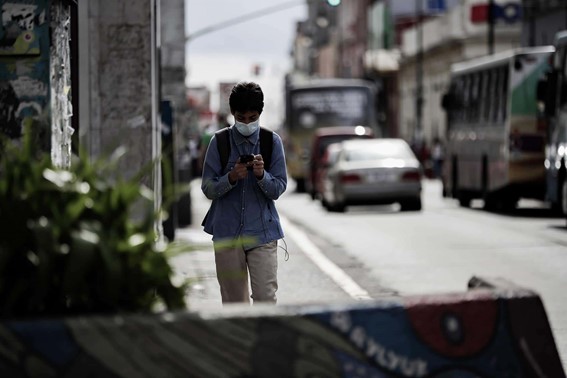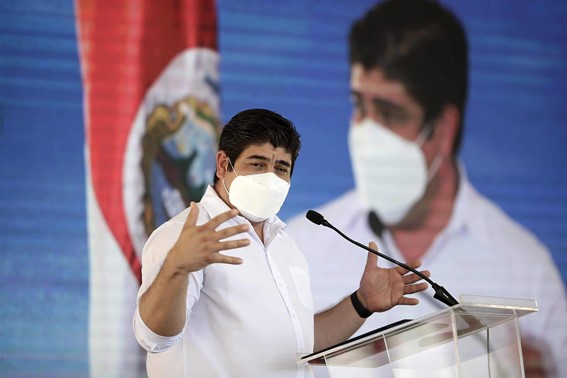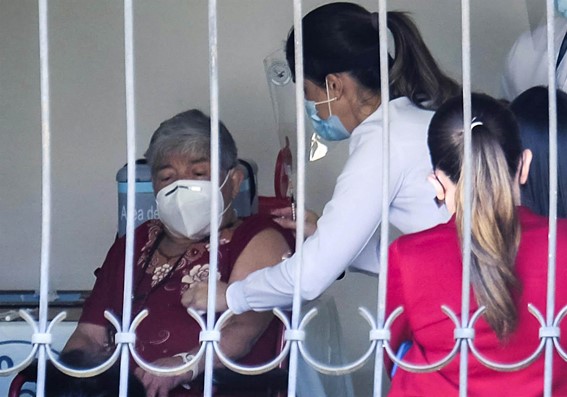Costa Rica on High Alert for COVID-19, What’s Happening?

HAVANA TIMES – “If you can’t wait to go to the party… you might have to wait for an ICU bed,” is the message that Costa Rica’s Social Security (CCSS) has been posting on its social media recently. It comes at a time when Costa Rica is suffering a third wave of COVID-19 infections. Far from being an exaggeration, this message accurately depicts the national situation right now.
Costa Rica’s once enviable situation in handling the pandemic is now sounding alarm bells. “We are at the brink of the worst health crisis in the history of this country,” the medical director of the CCSS Mario Ruiz said in a press conference, last weekend. “One of the world’s most robust health systems has reached capacity,” Alexander Solis, president of the National Commission for Risk Prevention and Emergency Attention, announced on Tuesday April 27th.
At the beginning of the health crisis, the Central American country stood out for how it handled the pandemic and kept infections in check. Different articles published in the international press explained the formula: an early response and a strong public health system.
While the country didn’t apply compulsory quarantine or a complete lockdown in early 2020, it did close its borders, as well as restaurants, bars, casinos, movie theaters, places of worship and other places where people concentrate. It also suspended school and working outside the home, as well as establishing restrictions of vehicle circulation.
Over the months, the government reopened borders, allowing certain activities to resume again and making measures more flexible; and in early 2021, the vaccination campaign was already underway and COVID-19 cases were low, until a third wave hit, and it hit hard.
Just last week, the country recorded the highest number of positive cases in fourteen months, that is since the beginning of the pandemic. Daily cases are almost at 2,000, an unprecedented number for the country of just over 5 million inhabitants. By April 27th, 94% of Intensive Care Unit (ICU) beds were occupied.
What happened in Costa Rica with its handling of the pandemic?
According to Costa Rican epidemiologist Juan Jose Romero, the situation changed for two reasons mostly: the economic situation no longer allows the country to reestablish measures such as closing things down, like they did last year, and people have got tired of complying with health regulations in a strict manner.

“There is a distressing fiscal austerity for the Government, which means that restrictions cannot be implemented. For now, the only restriction is the one that applies to the circulation of vehicles during the night and on weekends. The economic situation of Costa Ricans, we have a higher level of unemployment in many years, the poverty level has risen… the Government cannot make decisions that affect the tax office too much,” the expert weighed in.
The restriction on vehicle circulation consists of cars not being able to circulate during the night, for one day in the week and another day on the weekend, depending on the last digit of the license plate.
The Easter slip-up
Costa Rican virologist Eugenia Corrales agrees with Romero on the point that the third wave is the result of a false sense of security and the population being too free. It occurred after the country’s economic reopening and a low number of cases in the first three months of this year.
“High-risk spaces for infection were opened, lots of people went back to work, churches opened up, as did schools, gyms, but what really pushed us to the brink were the Easter holidays, when lots of people moved about, there was a lot of social contact, crowds,” Corrales said.
Before the Easter holidays, the Government invited the population to go on holiday so that national tourism would give a boost to the tourism industry; but always respecting recommendations such as not breaking “social bubbles”, wearing a mask, washing hands and avoiding large gatherings. It seems that the second part of the message didn’t sink in.
“New strains (of the virus) may be playing some role in the spike in infections, but I believe it was mainly people being over-exposed. People really let loose and the virus overdeveloped,” Romero added.
However, people continue to go out. “Bubbles being broken, parties and gatherings allow the virus to spread much faster,” Health authorities warned.
Vaccination in Costa Rica
Costa Rica was one of the first countries in the region to receive the first doses of the COVID-19 vaccine. On December 23, 2020, the first delivery arrived and Costa Ricans celebrated the good news on the morning of Christmas Eve. However, how quickly the vaccination program progresses depend on deliveries from pharmaceutical companies.
Over 800 000 dosis have been administered in the country. Frontline workers and the elderly were the first to receive the vaccine. Along with Panama, the country is in the lead in Central America in terms of the number of vaccinated people, but this won’t be enough to stop the third wave, Corrales believes.
“People believed that vaccinating those at higher risk would protect them and the virus would just be like the flu, but we have seen how the virus seeks out the most vulnerable. The most vulnerable are those who meet in gatherings or don’t respect measures, or those who work and don’t respect regulations, people aged 20-60 years old, who are the most affected right now,” he explains.

Hospital overload is real, collapse is imminent
According to Romero, only a miracle can save Costa Rica from the collapse of its hospital system. There are people who are talking about increasing capacity, which is something the government did during the first phase of the pandemic, when they bought equipment and trained personnel for new health assistance. However today, while the number of beds or equipment can increase, there is no more extra health personnel.
Up until Tuesday, there were only 21 beds in ICU for new patients needing them.
Collapse would increase the fatality of this coronavirus. Corrales points out that patients staying in hospital for prolonged periods of time would stop new cases from being seen. “The death rate might increase because of hospitals collapsing, rather than the disease becoming more deadly,” he explained.
Spike in late May
The percentage of positive cases out of all of the tests carried out in Costa Rica is currently 20.7%, the highest it’s been all year; while the R number is 1.29%, which proves that “a high level of COVID-19 transmission among the population,” the latest official statement from the Ministry of Health and CNE reads.
Romero shared that, based on a forecast that he is revising, the third outbreak in Costa Rica could only peak in the third or fourth week of May, but he explained that it isn’t foolproof because it is a mathematical model, and factors such as the population changing its behavior will influence what happens.
“There will be a collapse in one or two weeks, and because people are scared, we will have scenes that we haven’t had before, people are going to “keep put” as we Costa Ricans say, and cases will drop; on the other hand, vaccination efforts will continue, but I still think the wave will win out,” Corrales explains.
No respite
The pandemic hasn’t given the world any respite, and damages have been worse in countries with fewer resources. Costa Rica couldn’t be the exception, even if it had been prepared.
“The great lesson is that in an urgent economic situation, like what Costa Rica had pre-pandemic, fighting against a pandemic disease with high social and health costs is an exceptionally difficult battle to win, even with everyone cooperating, because people get tired,” Romero believes.
“We are asking the population to only leave their homes for the bare essentials,” president Carlos Alvarado said, last weekend when he said he wouldn’t be declaring things to shut again.
According to Corrales, the moral here is that you can’t reopen when the virus’ transmission rate is still high. “This virus is so contagious that it finds the smallest guard down to start infecting people. We saw it in Uruguay, it also happened there. It was an example and now we are seeing increased deaths and cases, and they are also vaccinating, even quicker than here. It’s sad because people know what is happening, but they aren’t doing anything,” he laments.
Up until today, Costa Rica has reported 231,000 COVID-19 cases since the beginning of the pandemic and 3,186 deaths. The minister of Health Daniel Salas made an emphatic call with anguish in his voice: “Please, let’s look after ourselves like never before,” he said, hoping that the Costa Rican people do start taking action.





